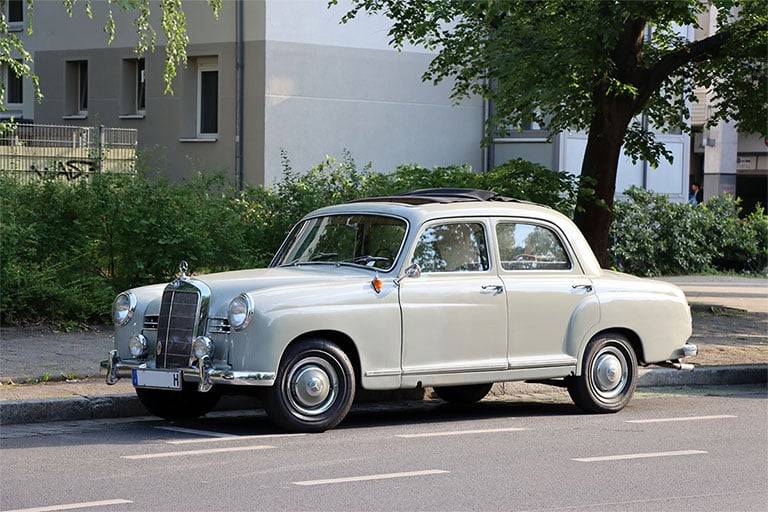Birth of the Ponton
The Ponton series, named after the German word for pontoon, was the first modern Mercedes-Benz passenger car to feature an enclosed body. It was also the brand’s first foray into unitary body design, a groundbreaking innovation at the time. The initial range included the 180 and 180D diesel models, which shared engines and chassis components with the pre-war 170 series. Beneath the familiar exterior, however, the Ponton was a truly modern car.
Groundbreaking Design
The Ponton’s design was ahead of its time, with features that were unusually modern for the time. The integral body-frame construction made the intermediate sedan lighter and stiffer than its predecessors. A swing axle and trailing arms supported the rear wheels, while the front suspension featured double wishbones and a U-shaped axle carrier. These advances in suspension technology resulted in impressive handling and ride quality.

Power and Performance
The base powerplant for the Ponton was the M136, a 1.8-litre four-cylinder engine derived from the W136 model introduced in 1935. With a cast iron block, aluminium head, side-valve design, and Solex carburetor, the M136 produced 51 horsepower and 83 pound-feet of torque. The 180 Ponton reached 60 mph in 31 seconds and had a top speed of 78 mph (126 km/h). Customers also had the option of a 1.8-litre diesel engine, known as the 180D, which offered slightly better fuel economy. The average price of a 180 Ponton ranges from 20.000 to 30.000 Euros.
Evolution of the Ponton
In 1954, Mercedes-Benz introduced the long-wheelbase Type 220, known internally as the W180 series, as an improvement to the Ponton lineup. These models featured six-cylinder engines and continued to rely on carburetors for fuel delivery. The 220 SE, introduced in 1958 as the W128, took the Ponton to new heights with the introduction of Bosch mechanical fuel injection. The 220 SE became a luxury rarity on the market. Depending on equipment and condition, its price ranges from 35.000 to 162.000 Euros.
Your Wealth, Our Priority: Altoo's Consolidation Power, Secure Document Management, and Seamless Stakeholder Sharing for High Net Worth Individuals. Preview Platform.

Driving Experience
Despite being designed over 70 years ago, the Ponton offers a surprisingly modern driving experience. Its unitized body construction, fully independent suspension, and smooth controls contribute to its impressive handling and refined ride quality. The column shift for the four-speed manual transmission may be unfamiliar to modern drivers, but it quickly becomes intuitive. The Ponton’s performance, while not sporty by today’s standards, is more than adequate for regular use on modern roads.
Restoration and Maintenance
While the Ponton’s build quality is renowned, its rustproofing is not up to modern standards. As a result, finding a Ponton in good condition may require significant body repairs. Restoration costs can add up quickly, and the business case for a full restoration can be challenging given the relative value of the Ponton compared to other Mercedes-Benz classics. However, with Mercedes-Benz’s commitment to supporting its classic models, sourcing genuine parts should not be a major challenge.










